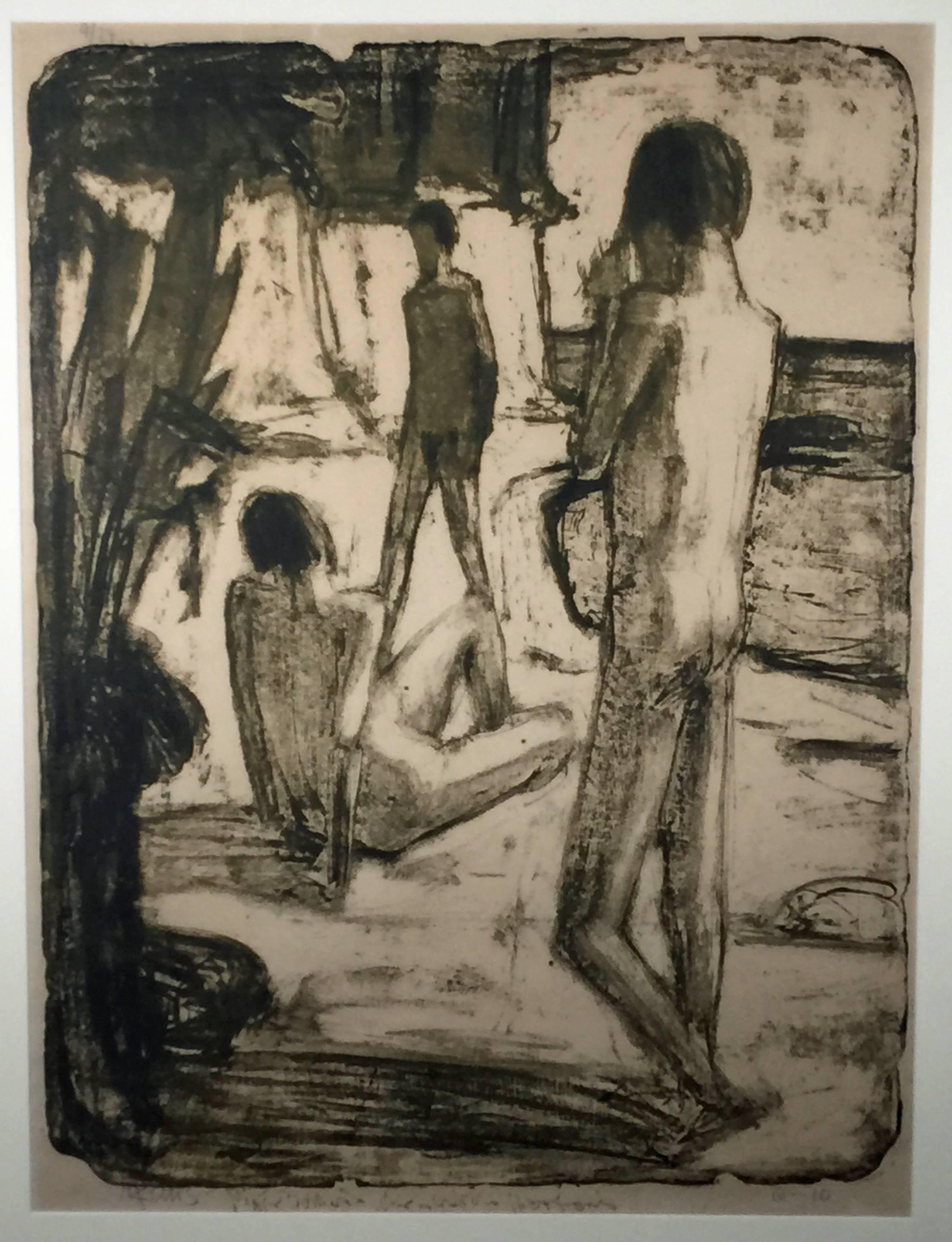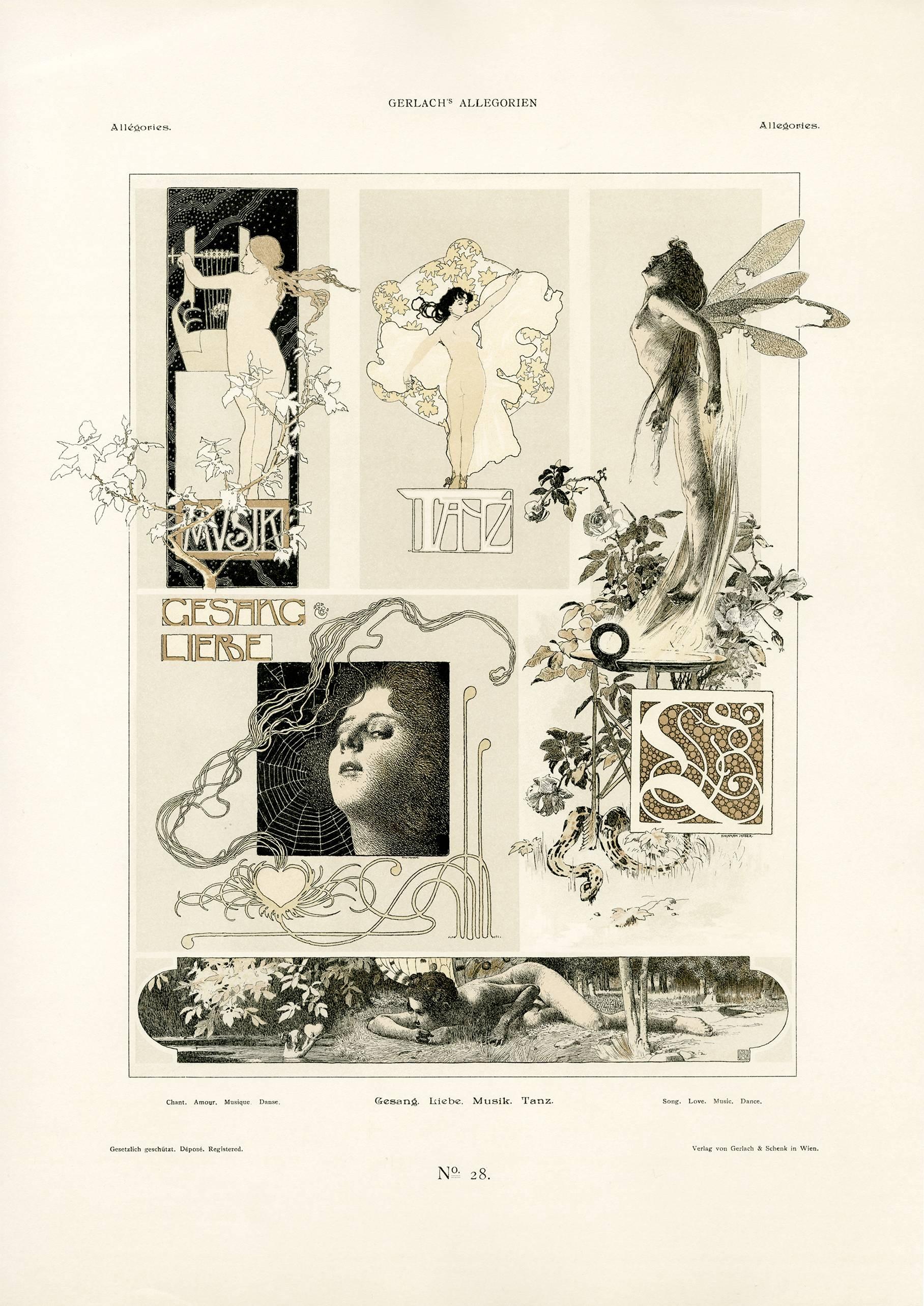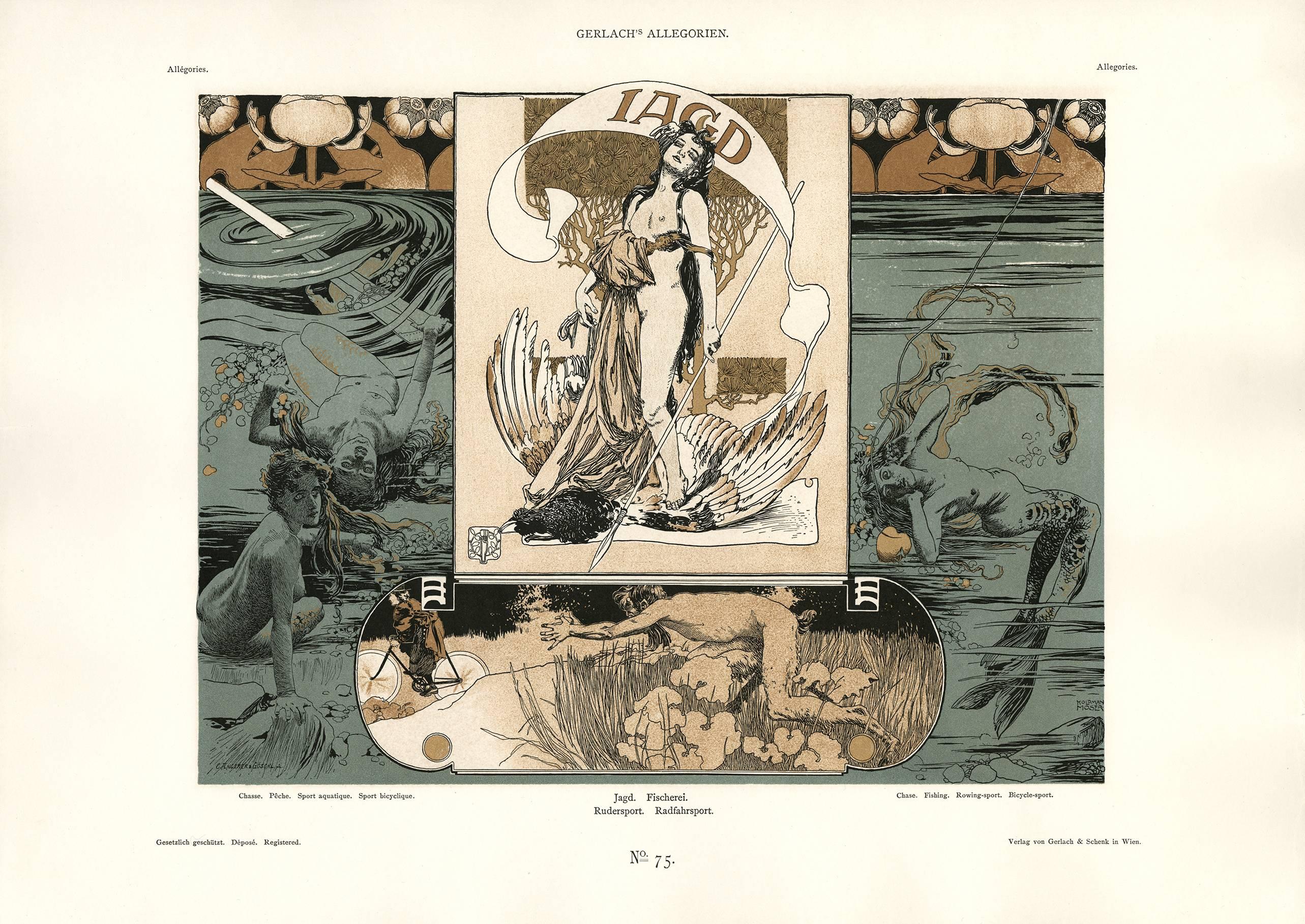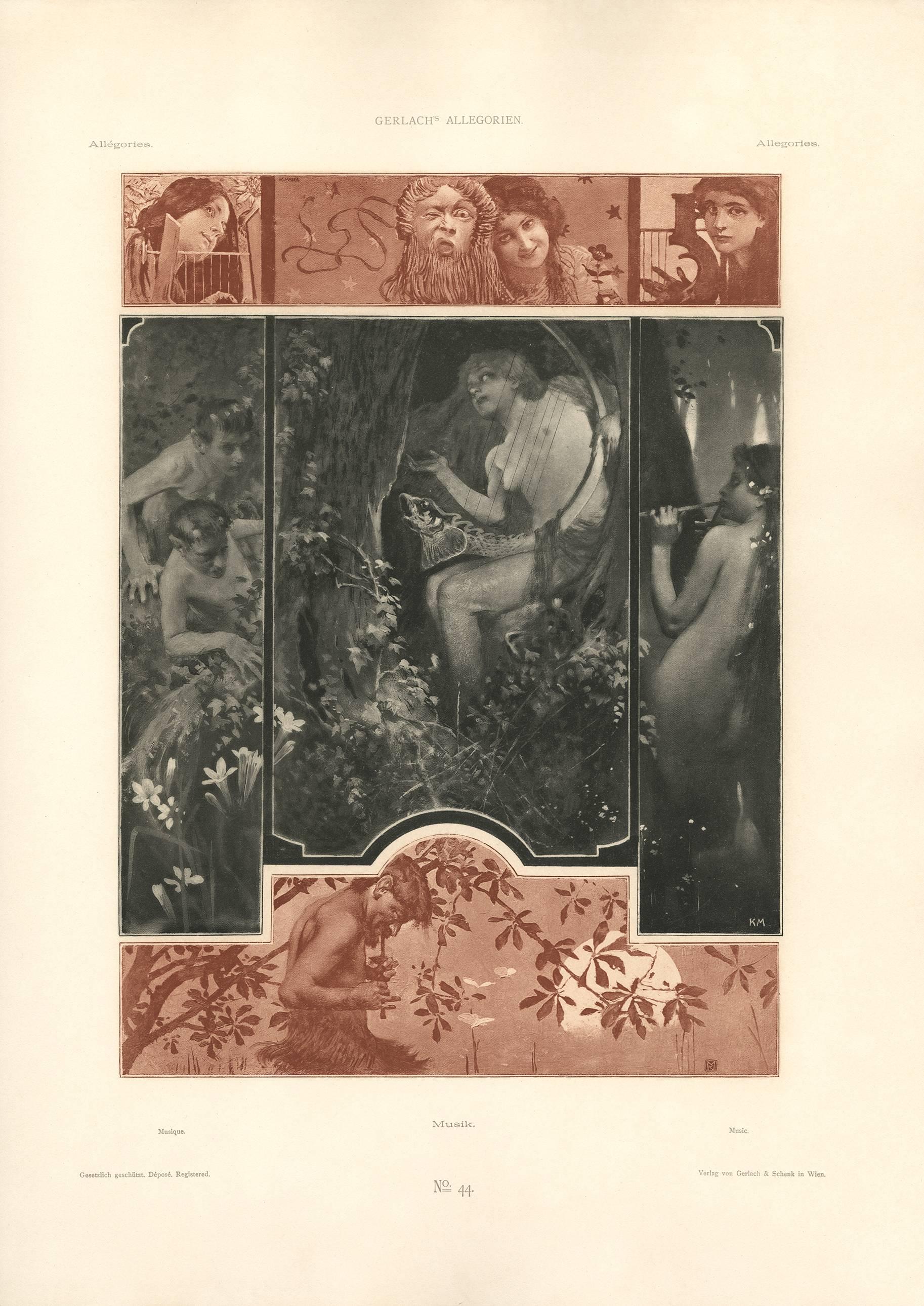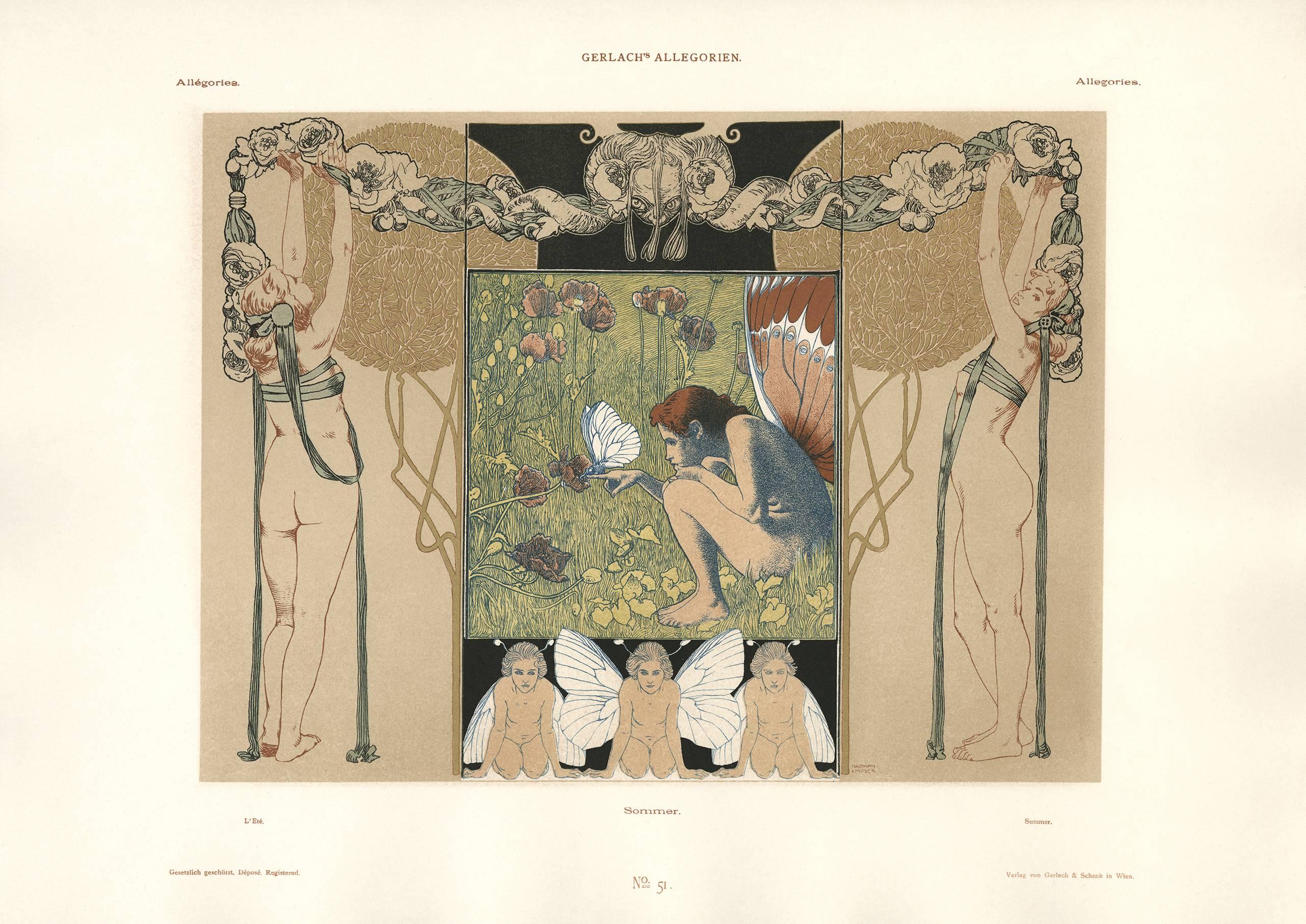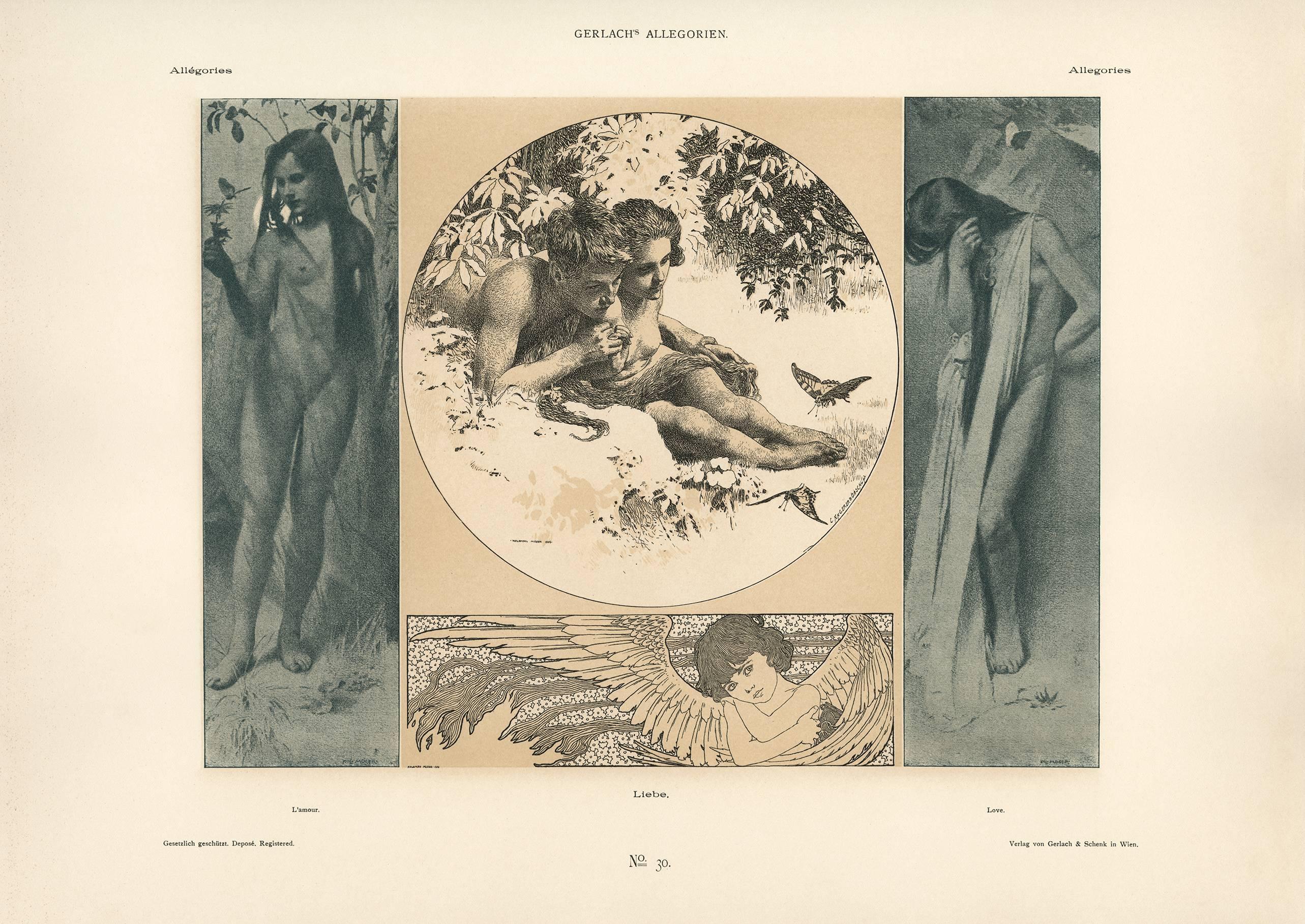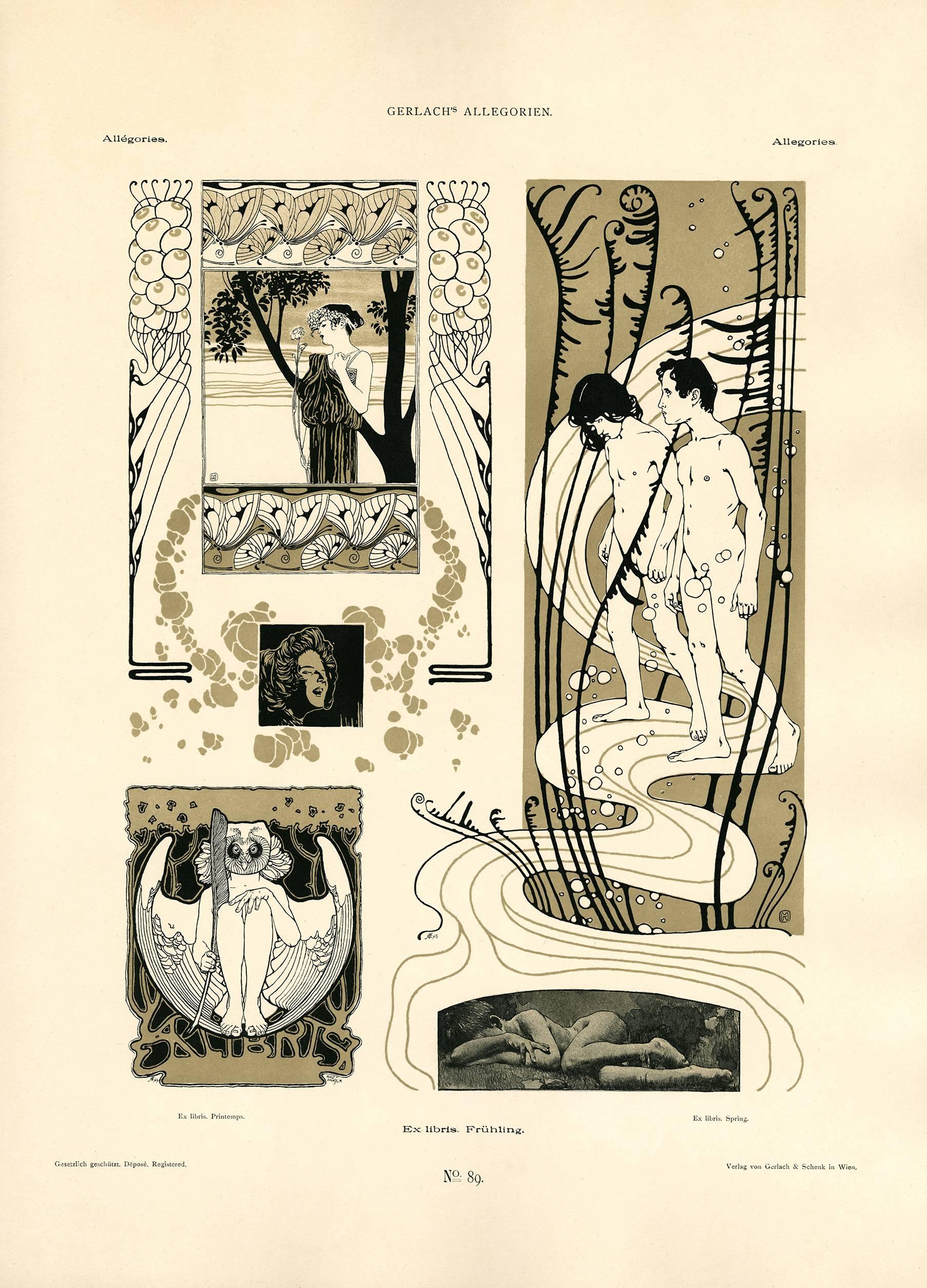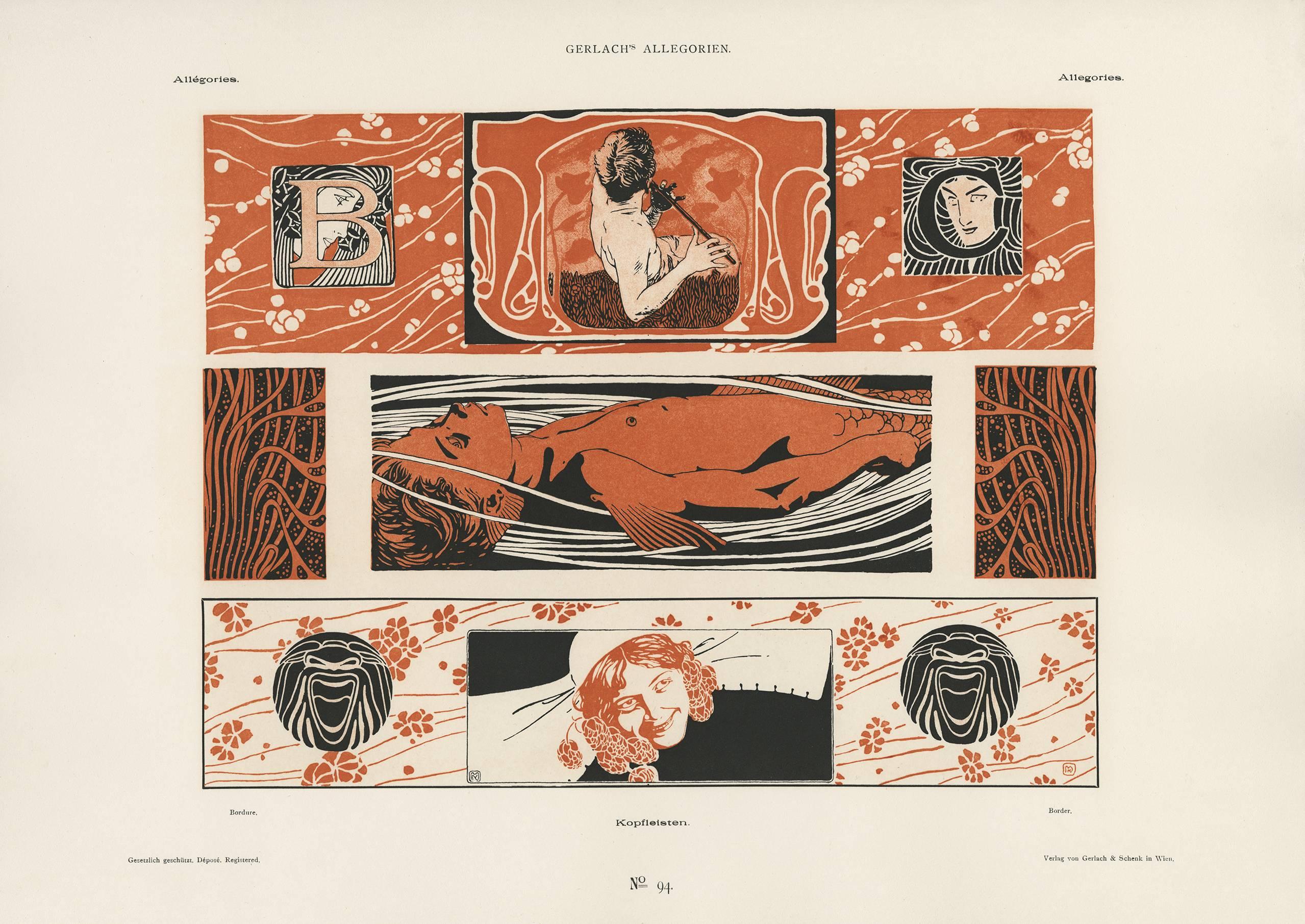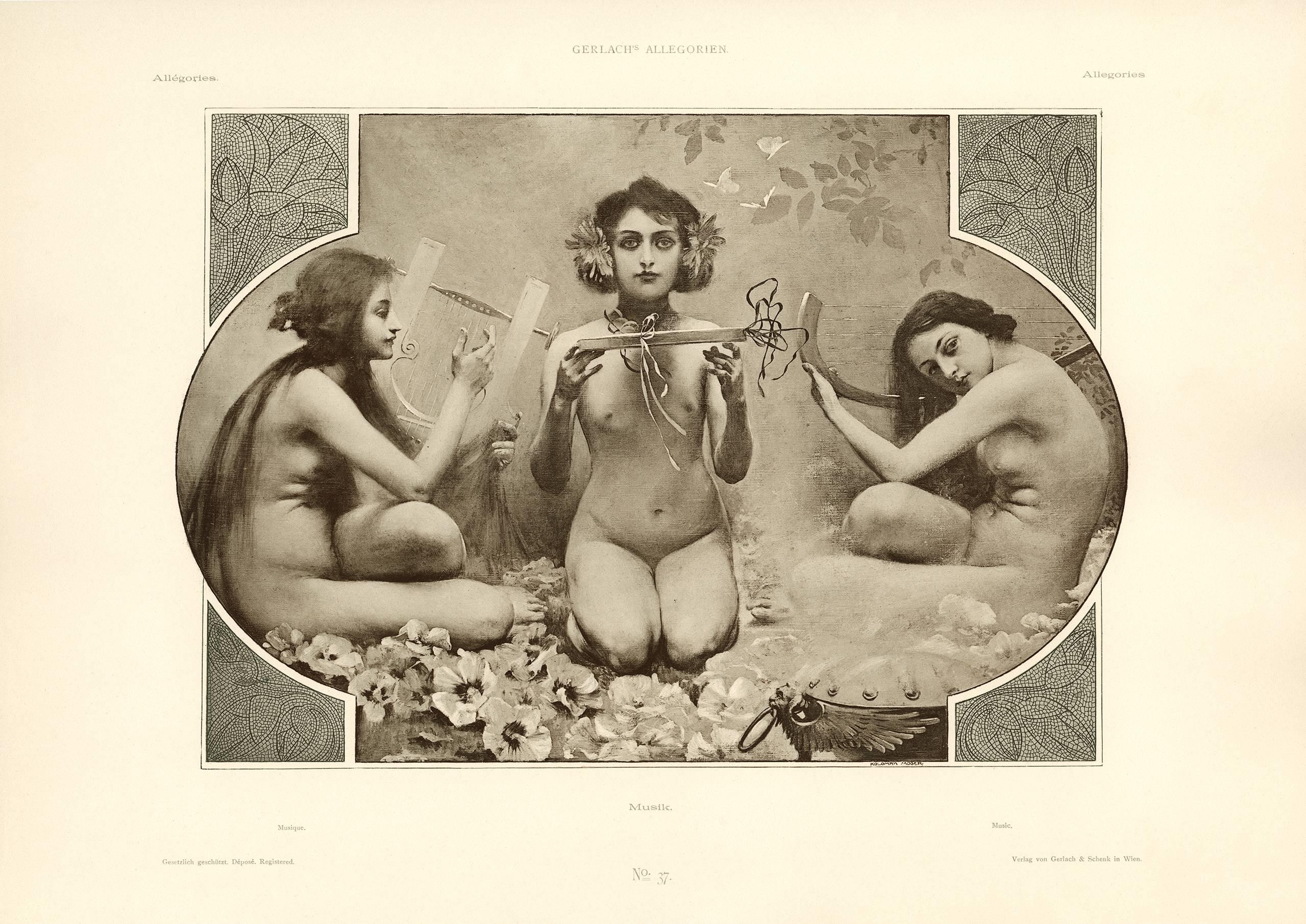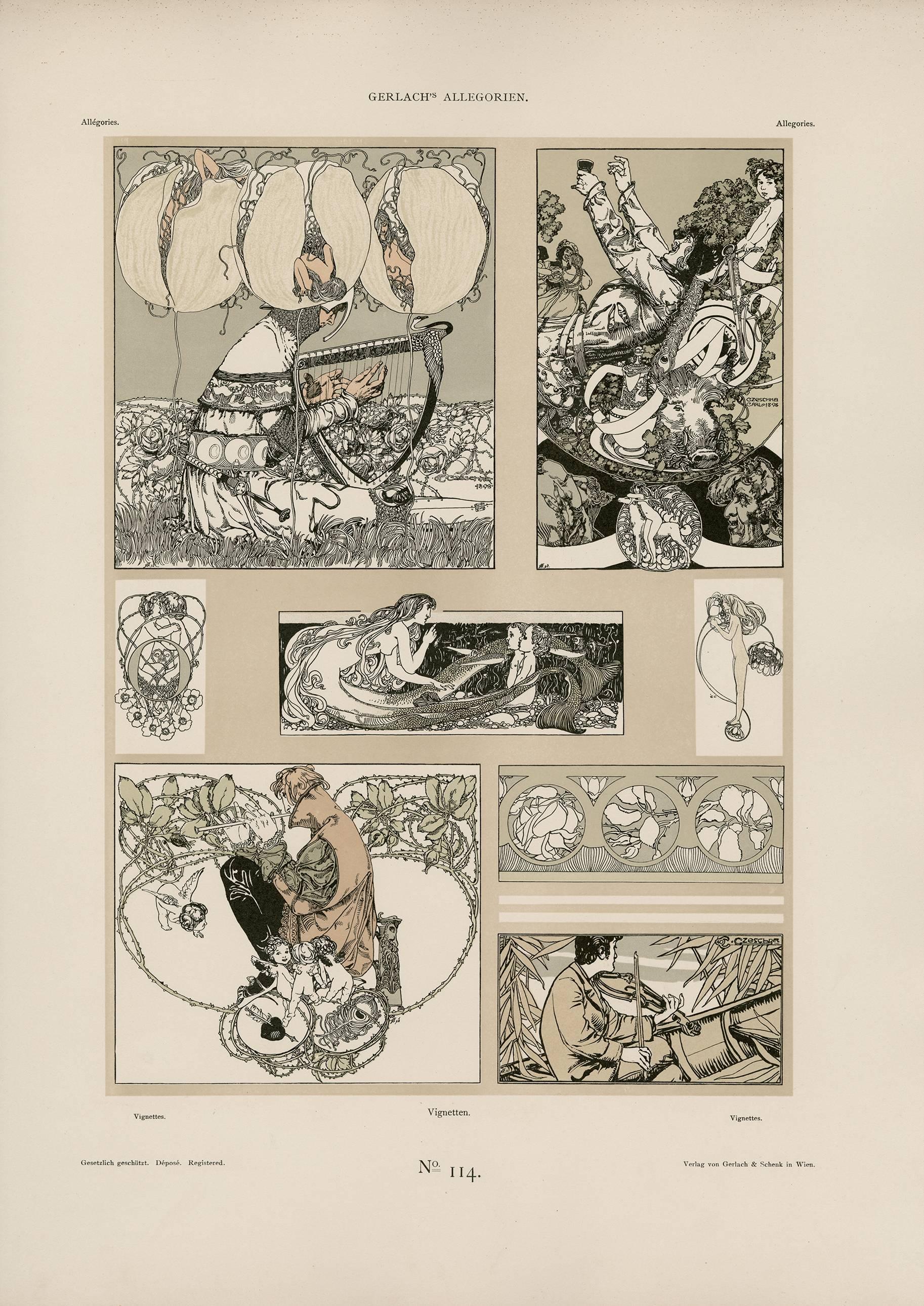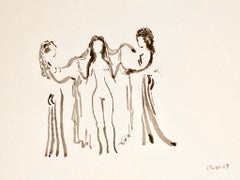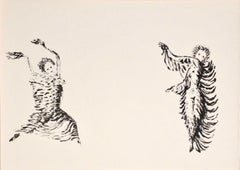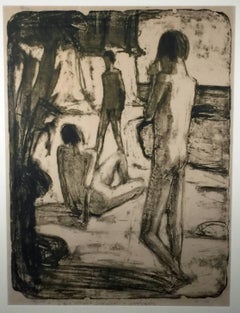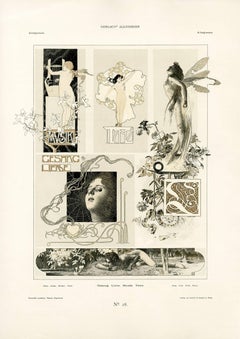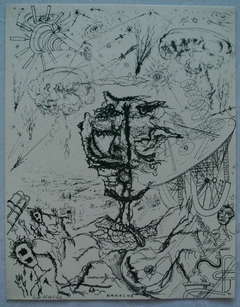
Untitled
View Similar Items
Want more images or videos?
Request additional images or videos from the seller
1 of 4
Armand Henri NakacheUntitled
About the Item
- Creator:Armand Henri Nakache (1894 - 1976, French)
- Dimensions:Height: 10.5 in (26.67 cm)Width: 8.25 in (20.96 cm)
- Medium:
- Movement & Style:
- Period:
- Condition:
- Gallery Location:Surfside, FL
- Reference Number:1stDibs: LU382117030
About the Seller
4.9
Platinum Seller
These expertly vetted sellers are 1stDibs' most experienced sellers and are rated highest by our customers.
Established in 1995
1stDibs seller since 2014
1,543 sales on 1stDibs
Typical response time: 1 hour
More From This SellerView All
- Apeles Fenosa Spanish Sculptor Mourlot Lithograph Abstract Expressionist FiguresBy Apelles FenosaLocated in Surfside, FLThis is from a hand signed, limited edition (edition of 125) folio or full page lithographs some having a poem verso. The individual sheets are not signed or numbered. This listing is just for the one sheet, not for the cover sheet or the signed sheet. This was printed at Mourlot in Paris, France, on velin D'Arches paper. Apel les Fenosa i Florensa (1899 - 1989) lived in Spain. Apelles Fenosa is known for Expressionist Sculpture. Artist's alternative names: Apel·les Fenosa, Apelles Fenosa Spanish Sculptor Fenosa was born in Barcelona, Spain in 1899 and as a young man worked in the studio of sculptor Enrique Casanovas where he came into contact with the ideas and adherents of the Modernist Movement and its influence in Barcelona, Paris and other European cities. In 1917 he founded together with Joan Rebull, Josep Granyer and Josep Viladomat the group The Evolutionists. He arrived in Paris in 1921. There he quickly gravitated into the Parisian avant garde artist community and became friends with Pablo Picasso, who became an early patron of his work, buying a significant number of his sculptures, and with the sculptor Max Jacob. By 1924 Fenosa was exhibiting in Paris and in his native city of Barcelona. Max Jacob wrote the preface to the catalogs of Fenosa's first Paris exhibition, and his show at the Zborowski gallery in 1928. In 1931 Fenosa was in Catalonia when the Second Spanish Republic was declared. There he remained in order to work with the anarchist movement and participate in the Republican ranks during the Spanish Civil War. He participated in the Venice Biennale in 1936 and with the coming to power of the Franco Fascist regime left Spain once again to settle in Paris. In 1942, he met the painter and poet, Paul Eluard, who became a close friend. In 1944, the Comite de Liberation du Limousin (Organization for the Liberation of the Limousin) commissions a sculpture to commemorate the Nazi killings of Oradour-sur-Glane. He creates the "Monument aux Martyrs d'Oradour-sur-Glane" (Monument to the Martyrs of Oradour) presently in Limoges. From 1946 Fenosa exhibited individually or collectively in Paris, London, Barcelona, Madrid, Prague, New York, Tokyo, Rabat, Osaka, Casablanca, Carrara. His personal exhibition catalogs are prefaced by the most famous writers and poets of his time, including Paul Eluard, Jean Cocteau, Jules Supervielle, Josep Carner, Alexandre Cirici-Pellicer, Francis Ponge, Pablo Neruda, Michel Cournot, Roger Caillois, Salvador Espriu. He was part of a generation of Spanish and Catalan artists that included Jose Amat Pages, Ramon Pichot, Alfredo Opisso Cardona, Ramon Aguilar More, Juan Cardona Llados, Josep Miquel Serrano...Category
1970s Expressionist Figurative Prints
MaterialsLithograph
- Apeles Fenosa Spanish Sculptor Mourlot Lithograph Abstract Expressionist FiguresBy Apelles FenosaLocated in Surfside, FLThis is from a hand signed, limited edition (edition of 125) folio or full page lithographs some having a poem verso. The individual sheets are not signed or numbered. This listing is just for the one sheet. This was printed at Mourlot in Paris, France, on velin D'Arches paper. Apel les Fenosa i Florensa (1899 - 1989) lived in Spain. Apelles Fenosa is known for Expressionist Sculpture. Artist's alternative names: Apel·les Fenosa, Apelles Fenosa Spanish Sculptor Fenosa was born in Barcelona, Spain in 1899 and as a young man worked in the studio of sculptor Enrique Casanovas where he came into contact with the ideas and adherents of the Modernist Movement and its influence in Barcelona, Paris and other European cities. In 1917 he founded together with Joan Rebull, Josep Granyer and Josep Viladomat the group The Evolutionists. He arrived in Paris in 1921. There he quickly gravitated into the Parisian avant garde artist community and became friends with Pablo Picasso, who became an early patron of his work, buying a significant number of his sculptures, and with the sculptor Max Jacob. By 1924 Fenosa was exhibiting in Paris and in his native city of Barcelona. Max Jacob wrote the preface to the catalogs of Fenosa's first Paris exhibition, and his show at the Zborowski gallery in 1928. In 1931 Fenosa was in Catalonia when the Second Spanish Republic was declared. There he remained in order to work with the anarchist movement and participate in the Republican ranks during the Spanish Civil War. He participated in the Venice Biennale in 1936 and with the coming to power of the Franco Fascist regime left Spain once again to settle in Paris. In 1942, he met the painter and poet, Paul Eluard, who became a close friend. In 1944, the Comite de Liberation du Limousin (Organization for the Liberation of the Limousin) commissions a sculpture to commemorate the Nazi killings of Oradour-sur-Glane. He creates the "Monument aux Martyrs d'Oradour-sur-Glane" (Monument to the Martyrs of Oradour) presently in Limoges. From 1946 Fenosa exhibited individually or collectively in Paris, London, Barcelona, Madrid, Prague, New York, Tokyo, Rabat, Osaka, Casablanca, Carrara. His personal exhibition catalogs are prefaced by the most famous writers and poets of his time, including Paul Eluard, Jean Cocteau, Jules Supervielle, Josep Carner, Alexandre Cirici-Pellicer, Francis Ponge, Pablo Neruda, Michel Cournot, Roger Caillois, Salvador Espriu. He was part of a generation of Spanish and Catalan artists that included Jose Amat Pages, Ramon Pichot, Alfredo Opisso Cardona, Ramon Aguilar More, Juan Cardona Llados, Josep Miquel Serrano...Category
1970s Expressionist Figurative Prints
MaterialsLithograph
- Apeles Fenosa Spanish Sculptor Mourlot Lithograph Abstract Expressionist FiguresBy Apelles FenosaLocated in Surfside, FLThis is from a hand signed, limited edition (edition of 125) folio or full page lithographs some having a poem verso. The individual sheets are not signed or numbered. This listing is just for the one sheet, not for the cover sheet or the signed sheet. This was printed at Mourlot in Paris, France, on velin D'Arches paper. Apel les Fenosa i Florensa (1899 - 1989) lived in Spain. Apelles Fenosa is known for Expressionist Sculpture. Artist's alternative names: Apel·les Fenosa, Apelles Fenosa Spanish Sculptor Fenosa was born in Barcelona, Spain in 1899 and as a young man worked in the studio of sculptor Enrique Casanovas where he came into contact with the ideas and adherents of the Modernist Movement and its influence in Barcelona, Paris and other European cities. In 1917 he founded together with Joan Rebull, Josep Granyer and Josep Viladomat the group The Evolutionists. He arrived in Paris in 1921. There he quickly gravitated into the Parisian avant garde artist community and became friends with Pablo Picasso, who became an early patron of his work, buying a significant number of his sculptures, and with the sculptor Max Jacob. By 1924 Fenosa was exhibiting in Paris and in his native city of Barcelona. Max Jacob wrote the preface to the catalogs of Fenosa's first Paris exhibition, and his show at the Zborowski gallery in 1928. In 1931 Fenosa was in Catalonia when the Second Spanish Republic was declared. There he remained in order to work with the anarchist movement and participate in the Republican ranks during the Spanish Civil War. He participated in the Venice Biennale in 1936 and with the coming to power of the Franco Fascist regime left Spain once again to settle in Paris. In 1942, he met the painter and poet, Paul Eluard, who became a close friend. In 1944, the Comite de Liberation du Limousin (Organization for the Liberation of the Limousin) commissions a sculpture to commemorate the Nazi killings of Oradour-sur-Glane. He creates the "Monument aux Martyrs d'Oradour-sur-Glane" (Monument to the Martyrs of Oradour) presently in Limoges. From 1946 Fenosa exhibited individually or collectively in Paris, London, Barcelona, Madrid, Prague, New York, Tokyo, Rabat, Osaka, Casablanca, Carrara. His personal exhibition catalogs are prefaced by the most famous writers and poets of his time, including Paul Eluard, Jean Cocteau, Jules Supervielle, Josep Carner, Alexandre Cirici-Pellicer, Francis Ponge, Pablo Neruda, Michel Cournot, Roger Caillois, Salvador Espriu. He was part of a generation of Spanish and Catalan artists that included Jose Amat Pages, Ramon Pichot, Alfredo Opisso Cardona, Ramon Aguilar More, Juan Cardona Llados, Josep Miquel Serrano, Ignacio Zuloaga Y Zabaleta, Andre Beaudin, Francisco Domingo Y Segura, Jose Armet Y Portanel, Jose Ventosa Domenech, Antonio Vila Arrufat, Montserrat Gudiol...Category
1970s Expressionist Figurative Prints
MaterialsLithograph
- Czech Park Scene, Swing Set Weimar Era 1923 LithographBy Vojtech TittelbachLocated in Surfside, FLLadies chatting in park. man pushes girl on boat swing. Vojtěch Tittelbach ( 1900, Mutějovice - 1971, Prague) was a Czech painter and graphic artist, graduate of the Academy of Fine...Category
1920s Expressionist Figurative Prints
MaterialsLithograph
- Apeles Fenosa Spanish Sculptor Mourlot Lithograph Abstract Expressionist FiguresBy Apelles FenosaLocated in Surfside, FLThis is from a hand signed, limited edition (edition of 125) folio or full page lithographs some having a poem verso. The individual sheets are not signed or numbered. This listing ...Category
1970s Expressionist Figurative Prints
MaterialsLithograph
- Apeles Fenosa Spanish Sculptor Mourlot Lithograph Abstract Expressionist FiguresBy Apelles FenosaLocated in Surfside, FLThis is from a hand signed, limited edition (edition of 125) folio or full page lithographs some having a poem verso. The individual sheets are not signed or numbered. This listing ...Category
1970s Expressionist Figurative Prints
MaterialsLithograph
You May Also Like
- BADENDE MANNER: (THREE MALE BATHERS AT THE SHORE)By Max KausLocated in Portland, MEKaus, Max. BADENDE MANNER: (THREE MALE BATHERS AT THE SHORE). Lithograph, c. 1924. Signed, lower left, in pencil, and numbered 6-10, further inscribed, lo...Category
1920s Expressionist Figurative Prints
MaterialsLithograph
- Sema portfolio, 1912, "Male Nude I" Lithograph print 21/215By Egon SchieleLocated in Chicago, ILMALE NUDE (SELF-PORTRAIT) I by Egon Schiele, 1912, a brush and ink lithograph on vellum paper made for the Munich-based artists’ association, Sema 15 Originalsteinzeichnungen portfol...Category
1910s Vienna Secession Figurative Prints
MaterialsLithograph
- Gerlach's Allegorien Plate #20: "Song, Love, Music, Dance" LithographBy Koloman MoserLocated in Chicago, ILKoloman Moser (1868 –1918), AUSTRIAN Instead of applying his flair and art education solely to painting, Koloman Moser embodied the idea of Gesamt Kunstwerk (all-embracing art w...Category
1890s Vienna Secession Figurative Prints
MaterialsLithograph
- Gerlach's Allegorien Plate #35: "Love & Wine" LithographBy Koloman MoserLocated in Chicago, ILKoloman Moser (1868 –1918), AUSTRIAN Instead of applying his flair and art education solely to painting, Koloman Moser embodied the idea of Gesamt Kunstwerk (all-embracing art work) by designing architecture, furniture, jewelry, graphics, and tapestries meant to coordinate every detail of an environment. His work transcended the imitative decorative arts of earlier eras and helped to define Modernism for generations to come. Moser achieved a remarkable balance between intellectual structure (often geometric) and hedonistic luxury. Collaborating with Gustav Klimt and Josef Hoffmann, the artist was an editor and active contributor to Ver Sacrum, (Sacred Spring), the journal of the Viennese Secession that was so prized for its aesthetics and high quality production that it was considered a work of art. The magazine featured drawings and designs in the Jugendstil style (Youth) along with literary contributions from distinguished writers from across Europe. It quickly disseminated both the spirit and the style of the Secession. In 1903 Moser and Hoffmann founded and led the Wiener Werkstatte (Viennese Workshop) a collective of artisans that produced elegant decorative arts items, not as industrial prototypes but for the purpose of sale to the public. The plan, as idealistic then as now, was to elevate the lives of consumers by means of beautiful and useful interior surroundings. Moser’s influence has endured throughout the century. His design sensibility is evident from the mid-century modern furniture of the 1950s and ‘60s to the psychedelic rock posters...Category
1890s Vienna Secession Figurative Prints
MaterialsLithograph
- Gerlach's Allegorien Plate #75: "Hunting, Fishing, Rowing, Cycling"By Koloman MoserLocated in Chicago, ILKoloman Moser (1868 –1918), AUSTRIAN Instead of applying his flair and art education solely to painting, Koloman Moser embodied the idea of Gesamt Kunstwerk (all-embracing art work) by designing architecture, furniture, jewelry, graphics, and tapestries meant to coordinate every detail of an environment. His work transcended the imitative decorative arts of earlier eras and helped to define Modernism for generations to come. Moser achieved a remarkable balance between intellectual structure (often geometric) and hedonistic luxury. Collaborating with Gustav Klimt and Josef Hoffmann, the artist was an editor and active contributor to Ver Sacrum, (Sacred Spring), the journal of the Viennese Secession that was so prized for its aesthetics and high quality production that it was considered a work of art. The magazine featured drawings and designs in the Jugendstil style (Youth) along with literary contributions from distinguished writers from across Europe. It quickly disseminated both the spirit and the style of the Secession. In 1903 Moser and Hoffmann founded and led the Wiener Werkstatte (Viennese Workshop) a collective of artisans that produced elegant decorative arts items, not as industrial prototypes but for the purpose of sale to the public. The plan, as idealistic then as now, was to elevate the lives of consumers by means of beautiful and useful interior surroundings. Moser’s influence has endured throughout the century. His design sensibility is evident from the mid-century modern furniture of the 1950s and ‘60s to the psychedelic rock posters...Category
1890s Vienna Secession Figurative Prints
MaterialsLithograph
- Gerlach's Allegorien Plate #44: "Music" LithographBy Koloman MoserLocated in Chicago, ILKoloman Moser (1868 –1918), AUSTRIAN Instead of applying his flair and art education solely to painting, Koloman Moser embodied the idea of Gesamt Kunstwerk (all-embracing art work) by designing architecture, furniture, jewelry, graphics, and tapestries meant to coordinate every detail of an environment. His work transcended the imitative decorative arts of earlier eras and helped to define Modernism for generations to come. Moser achieved a remarkable balance between intellectual structure (often geometric) and hedonistic luxury. Collaborating with Gustav Klimt and Josef Hoffmann, the artist was an editor and active contributor to Ver Sacrum, (Sacred Spring), the journal of the Viennese Secession that was so prized for its aesthetics and high quality production that it was considered a work of art. The magazine featured drawings and designs in the Jugendstil style (Youth) along with literary contributions from distinguished writers from across Europe. It quickly disseminated both the spirit and the style of the Secession. In 1903 Moser and Hoffmann founded and led the Wiener Werkstatte (Viennese Workshop) a collective of artisans that produced elegant decorative arts items, not as industrial prototypes but for the purpose of sale to the public. The plan, as idealistic then as now, was to elevate the lives of consumers by means of beautiful and useful interior surroundings. Moser’s influence has endured throughout the century. His design sensibility is evident from the mid-century modern furniture of the 1950s and ‘60s to the psychedelic rock posters...Category
1890s Vienna Secession Figurative Prints
MaterialsLithograph
